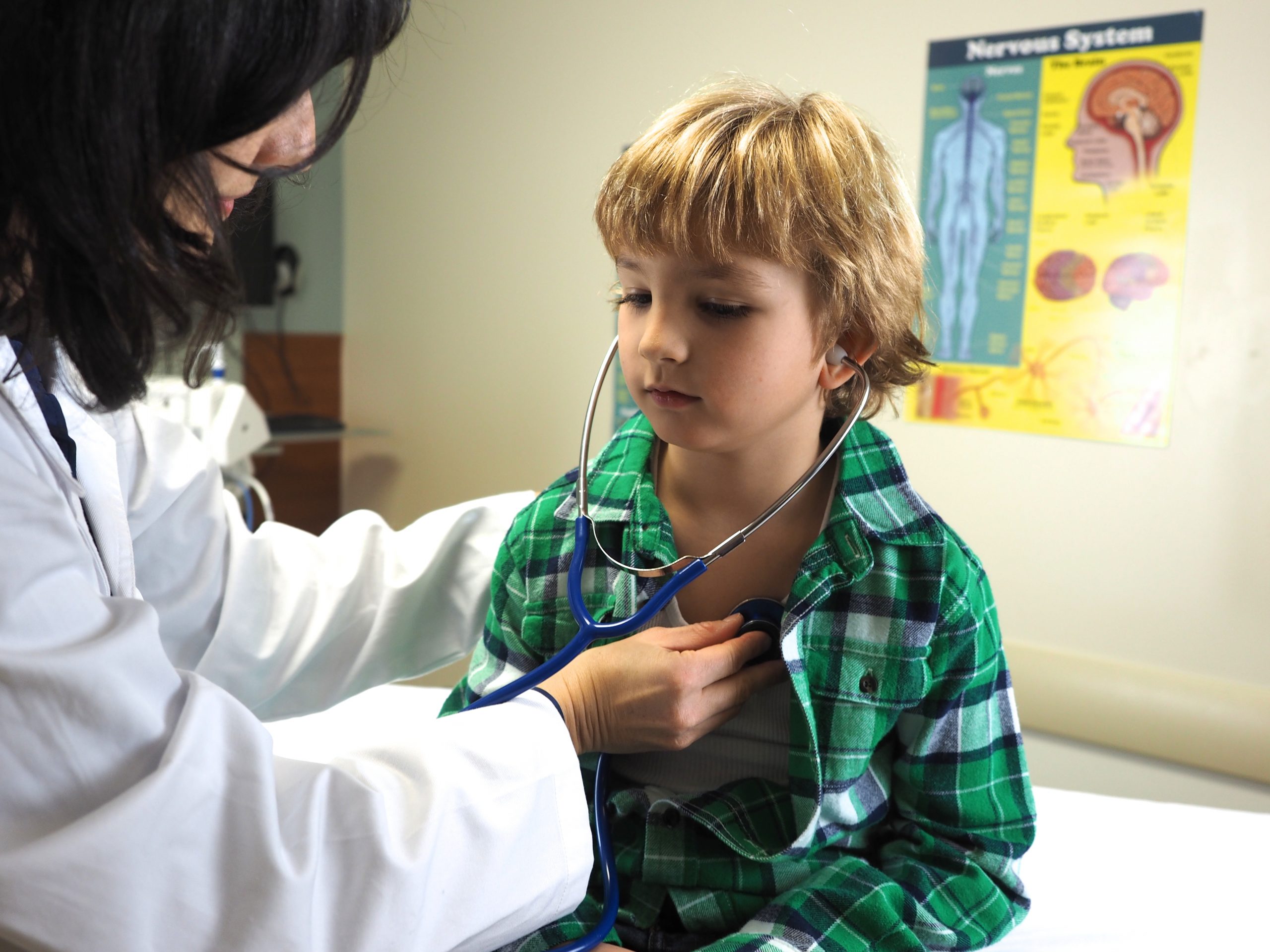

Researchers at Oregon Health & Science University have developed a framework to forecast the severity and symptoms of a rare and severe genetic diseases that affect approximately 40 children globally, including Raiden Pham, a patient at OHSU Doernbecher Children’s Hospital.
The research on rare genetic diseases, which was conducted in partnership with Baylor College of Medicine, was published in the journal eLife.
UBA5 disease is caused by genetically inherited abnormalities in the UBA5 gene, commonly known as developmental and epileptic encephalopathy 44, or DEE44. While the specific mechanisms and biological relevance of the gene remain unknown, scientists do know that it is critical to many of the body’s signaling processes, including the response to certain types of cellular stress. DEE44 is linked to a variety of serious health problems, including motor control abnormalities, cognitive difficulty, growth deficits, and other medical consequences. The illness eventually leads to chronic seizures and death, usually during the first few years of life.
“While you can discover through genetic testing that the UBA5 mutation is present, you don’t necessarily know how severe that mutation will be,” said study author Jonathan Pruneda, Ph.D., assistant professor of molecular microbiology and immunology in the OHSU School of Medicine. “This genetic diseases study is a huge step toward bridging that gap in knowledge. We now have a mechanism to understand severity of mutations and predict a child’s clinical outcome with some degree of confidence.”
A DEE44 child’s parents each have one copy of a specific UAB5 gene mutation. While a single copy of the mutation poses no risk, if a kid receives both copies, it can result in a quickly progressing neurological disease.
This study establishes the groundwork for future research into the many sorts of UBA5 mutations that can predict illness symptoms and severity – an important step toward better assisting DEE44 patients and creating new, potentially life-saving medicines.
The Pham family is hopeful that with ongoing support from the medical research community, a therapy for Raiden will be available soon. More importantly, the family believes that their efforts will bring much-needed hope and inspiration to other parents and families.
Creating the framework
A team of researchers at OHSU developed a new method for studying the activity of UBA5 in a controlled, “test tube” setting. This enabled them to pinpoint how specific UBA5 mutations cause the protein’s failure to function properly. The degree of malfunction caused by distinct UBA5 mutations could be characterized as low, intermediate, or severe.
Collaborators in Hugo Bellen’s, Ph.D.’s, laboratory at Baylor College of Medicine, then transferred DEE44 patient mutations into the UBA5 gene of fruit flies to create a novel “humanized” animal model of the disease. Some mutations resulted in death, while others resulted in progressive motor abnormalities, such as developmental delays and seizure-like symptoms seen in humans. Surprisingly, the intensity of symptoms in fruit flies corresponded to the work in test tubes, and both could be divided into mild, middle, or severe subtypes.
There are few research investigations and therapy possibilities because the disease is deemed ultra-rare. Researchers underline the significance of their findings since they provide a mechanistic explanation for the effects of UBA5 mutations and, more crucially, establish a clear roadmap for the development of new medications and gene treatments.
“It’s really helpful for parents to know, for better or worse, that the disease will follow a particular course,” said study author Ruth Napier, Ph.D., assistant professor of molecular microbiology and immunology in the OHSU School of Medicine. “A child with a more severe mutation may want to begin an aggressive gene therapy right away, whereas a child with a less severe mutation, which progresses slower, may be able to explore other options first.”
Families can have hope
his revelation is game-changing for parents like Tommy Pham.
Pham recalls seeing up to 17 doctors before landing at OHSU Doernbecher Children’s Hospital for genomic sequencing studies for his son, Raiden, who has UBA5 mutations. In August 2021, they obtained his formal diagnosis.
Pham adds that while Raiden’s quality of life is restricted, they will never lose up on finding a medication that will better his son’s and other children with the disease’s lives.
“We live in a time where we have the resources and technology to advance personalized medicine,” said Pham, who started The Raiden Science Foundation with his wife, Linda, in memory of their son.
The foundation is committed to rare genetic diseases research, advocacy, and education, and it has collaborated with university research institutions across the country, including OHSU, to develop UBA5 disease modeling and explore therapeutic alternatives.
“Really what this work does is provide hope, and our journey shows what’s possible if you don’t give up hope,” Pham said. “By having this paper out there, we’re sharing crucial information and connecting doctors and researchers to families who need answers. We’re creating change for the kids who have this disease now and also those who will inherit it in the future.”
In the future, researchers intend to use the framework established in this study to inform tailored treatment options. Pruneda, Napier, and their teams at OHSU are creating a novel drug screening platform to identify possible medications that can restore UBA5 function.
The team has already begun this essential work, screening over 1,000 FDA-approved medications with Sanjay Malhotra, Ph.D., director of the OHSU Center for Experimental Therapeutics.
“It’s been inspiring to see this work come to fruition and to think about all the institutions that came together to make it happen,” Napier said. “We hope our work can one day give these children a chance to live a healthy life.”
more recommended stories
 Gut Immune Cells and Long-Lasting Antiviral Protection.
Gut Immune Cells and Long-Lasting Antiviral Protection.Breakthrough Findings on How Gut Immune.
 Mild Pancreatic Duct Dilatation Signals Higher Cancer Risk
Mild Pancreatic Duct Dilatation Signals Higher Cancer RiskEarly Structural Changes Offer Critical Clues.
 How the Uterus Senses Force During Labor: New Insights
How the Uterus Senses Force During Labor: New InsightsA new study published in Science.
 Fat-Free Mass and Brain Outcomes in Preterm Babies
Fat-Free Mass and Brain Outcomes in Preterm BabiesEarly Fat-Free Mass May Hold the.
 How Hormones Shape Dopamine-Driven Learning
How Hormones Shape Dopamine-Driven LearningNYU Study on Hormones and Cognitive.
 Protein Pair Guides Chromosome Alignment in Mitosis
Protein Pair Guides Chromosome Alignment in MitosisKey Points A joint research team.
 Intensive mind-body retreat rapidly alters brain function
Intensive mind-body retreat rapidly alters brain functionAn intensive mind-body retreat combining meditation,.
 Citrus and Grape Compounds Help Prevent Type 2 Diabetes
Citrus and Grape Compounds Help Prevent Type 2 DiabetesA new clinical trial highlights the.
 Personalized Pain Care Transforms Parkinson’s Treatment
Personalized Pain Care Transforms Parkinson’s TreatmentNew UniSA research underscores the urgent.
 Genetic Diversity Explains Obesity Risk Differences
Genetic Diversity Explains Obesity Risk DifferencesCross-ancestry Study Identifies Novel Obesity Genes.

Leave a Comment